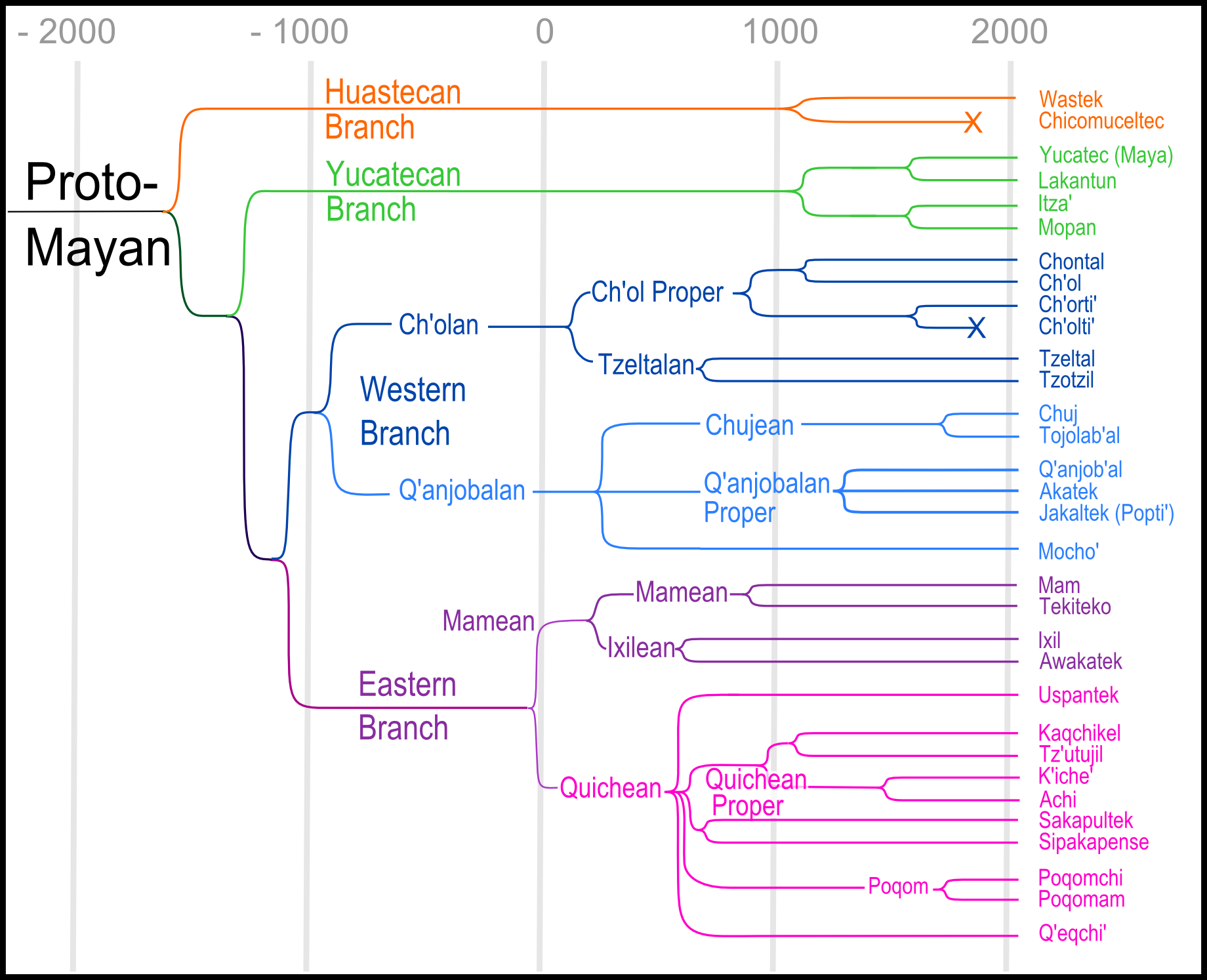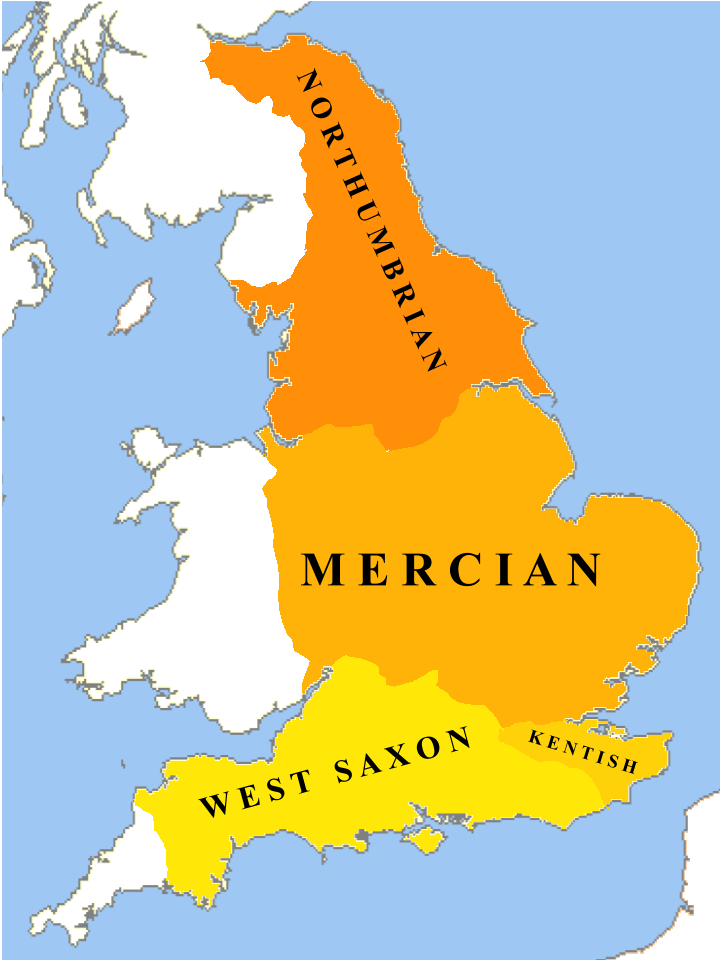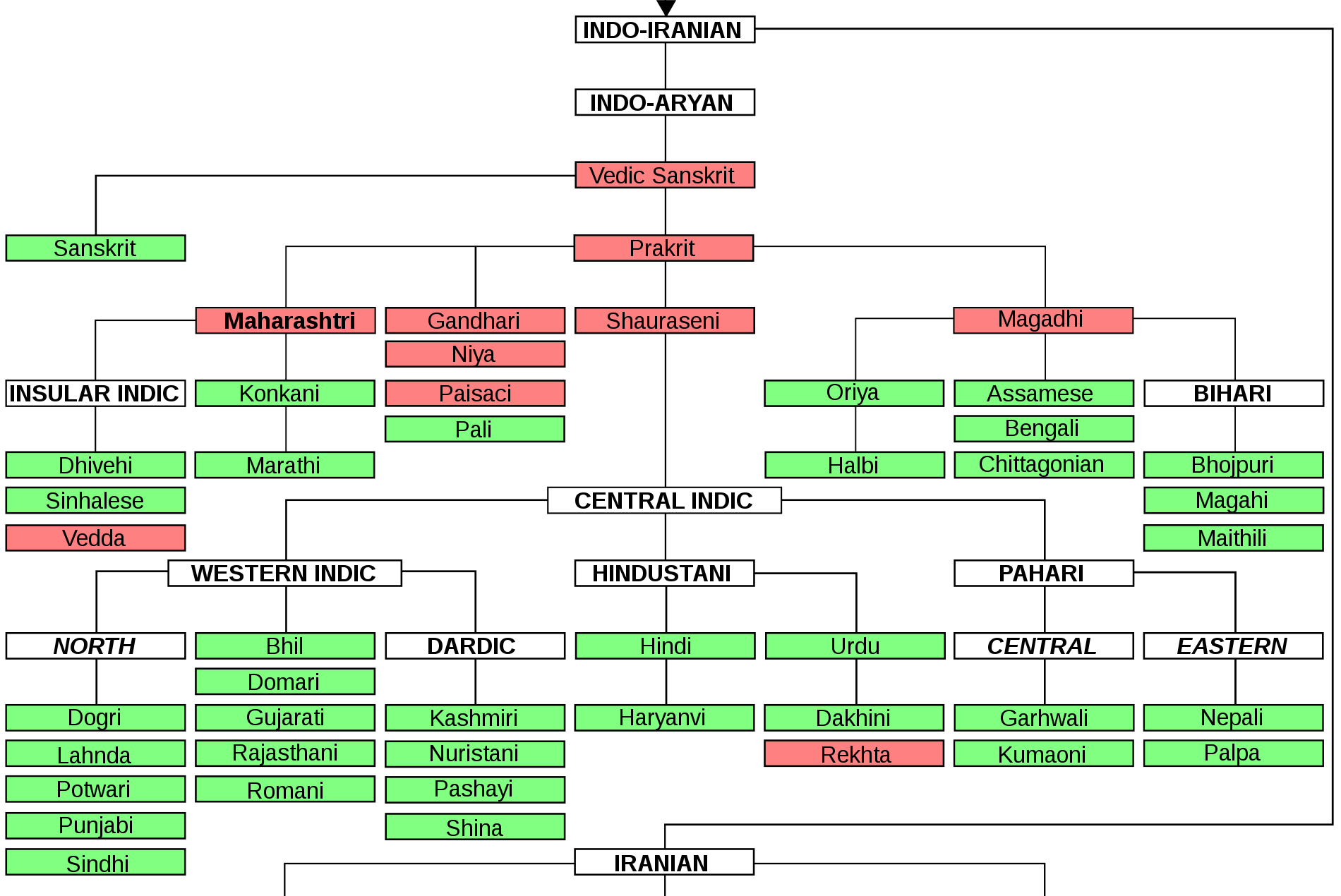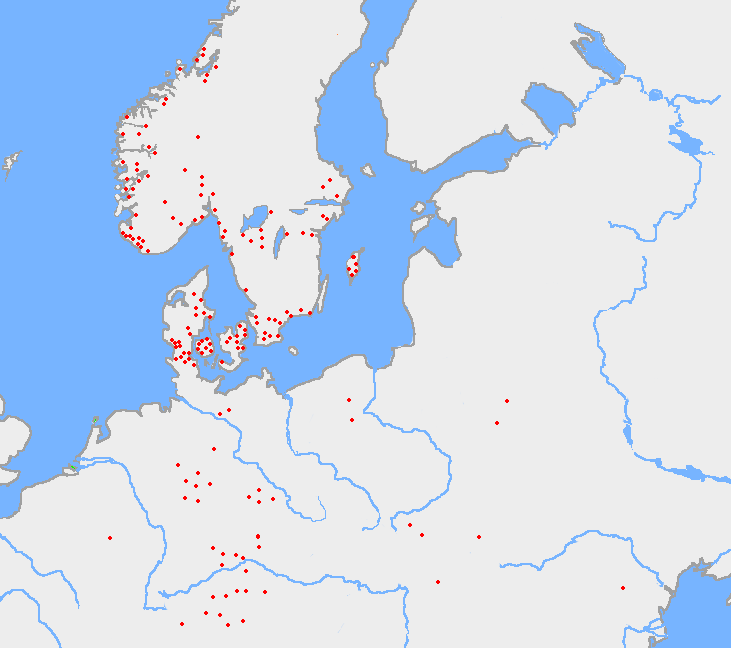|
Protolanguage
In the tree model of historical linguistics, a proto-language is a postulated ancestral language from which a number of attested languages are believed to have descended by evolution, forming a language family. Proto-languages are usually unattested, or partially attested at best. They are reconstructed by way of the comparative method. In the family tree metaphor, a proto-language can be called a mother language. Occasionally, the German term ' (; from 'primordial', 'original' + 'language') is used instead. It is also sometimes called the ''common'' or ''primitive'' form of a language (e.g. Common Germanic, Primitive Norse). In the strict sense, a proto-language is the most recent common ancestor of a language family, immediately before the family started to diverge into the attested ''daughter languages''. It is therefore equivalent with the ''ancestral language'' or ''parental language'' of a language family. Moreover, a group of lects that are not considered separate lan ... [...More Info...] [...Related Items...] OR: [Wikipedia] [Google] [Baidu] |
Tree Model
In historical linguistics, the tree model (also Stammbaum, genetic, or cladistic model) is a model of the evolution of languages analogous to the concept of a family tree, particularly a phylogenetic tree in the biological evolution of species. As with species, each language is assumed to have evolved from a single parent or "mother" language, with languages that share a common ancestor belonging to the same language family. Popularized by the German linguist August Schleicher in 1853,#francois, François (2014). the tree model has always been a common method of describing genetic relationship (linguistics), genetic relationships between languages since the first attempts to do so. It is central to the field of comparative linguistics, which involves using evidence from known languages and observed rules of language feature evolution to identify and describe the hypothetical proto-languages ancestral to each language family, such as Proto-Indo-European and the Indo-European langu ... [...More Info...] [...Related Items...] OR: [Wikipedia] [Google] [Baidu] |
Latin
Latin ( or ) is a classical language belonging to the Italic languages, Italic branch of the Indo-European languages. Latin was originally spoken by the Latins (Italic tribe), Latins in Latium (now known as Lazio), the lower Tiber area around Rome, Italy. Through the expansion of the Roman Republic, it became the dominant language in the Italian Peninsula and subsequently throughout the Roman Empire. It has greatly influenced many languages, Latin influence in English, including English, having contributed List of Latin words with English derivatives, many words to the English lexicon, particularly after the Christianity in Anglo-Saxon England, Christianization of the Anglo-Saxons and the Norman Conquest. Latin Root (linguistics), roots appear frequently in the technical vocabulary used by fields such as theology, List of Latin and Greek words commonly used in systematic names, the sciences, List of medical roots, suffixes and prefixes, medicine, and List of Latin legal terms ... [...More Info...] [...Related Items...] OR: [Wikipedia] [Google] [Baidu] |
Old Japanese
is the oldest attested stage of the Japanese language, recorded in documents from the Nara period (8th century). It became Early Middle Japanese in the succeeding Heian period, but the precise delimitation of the stages is controversial. Old Japanese was an early member of the Japonic language family. No genetic links to other language families have been proven. Old Japanese was written using man'yōgana, which is a writing system that employs Chinese characters as syllabograms or (occasionally) logograms. It featured a few phonemic differences from later forms, such as a simpler syllable structure and distinctions between several pairs of syllables that have been pronounced identically since Early Middle Japanese. The phonetic realization of these distinctions is uncertain. Internal reconstruction points to a pre-Old Japanese phase with fewer consonants and vowels. As is typical of Japonic languages, Old Japanese was primarily an agglutinative language with a subject–obj ... [...More Info...] [...Related Items...] OR: [Wikipedia] [Google] [Baidu] |
Old English
Old English ( or , or ), or Anglo-Saxon, is the earliest recorded form of the English language, spoken in England and southern and eastern Scotland in the Early Middle Ages. It developed from the languages brought to Great Britain by Anglo-Saxon settlers in the mid-5th century, and the first Old English literature dates from the mid-7th century. After the Norman Conquest of 1066, English was replaced for several centuries by Anglo-Norman language, Anglo-Norman (a langues d'oïl, type of French) as the language of the upper classes. This is regarded as marking the end of the Old English era, since during the subsequent period the English language was heavily influenced by Anglo-Norman, developing into what is now known as Middle English in England and Early Scots in Scotland. Old English developed from a set of Anglo-Frisian or Ingvaeonic dialects originally spoken by Germanic tribes traditionally known as the Angles (tribe), Angles, Saxons and Jutes. As the Germanic settlers ... [...More Info...] [...Related Items...] OR: [Wikipedia] [Google] [Baidu] |
Pre-Indo-European Languages
The pre-Indo-European languages are any of several ancient languages, not necessarily related to one another, that existed in Prehistoric Europe, Asia Minor, Ancient Iran and United Nations geoscheme for Asia#Southern_Asia, Southern Asia before the arrival of speakers of Indo-European languages. The oldest Indo-European language texts are Hittite language, Hittite and date from the 19th century BC in Kültepe (modern eastern Turkey), and while estimates vary widely, the spoken Indo-European languages are believed to have developed at the latest by the 3rd millennium BC (see Proto-Indo-European Urheimat hypotheses). Thus, the pre-Indo-European languages must have developed earlier than or, in some cases, alongside the Indo-European languages that ultimately displaced almost all of them. A handful of the pre-Indo-European languages are still extant: in Europe, Basque language, Basque retains a localised strength, with fewer than a million native speakers, but the Dravidian language ... [...More Info...] [...Related Items...] OR: [Wikipedia] [Google] [Baidu] |
Substratum (linguistics)
In linguistics, a stratum (Latin for 'layer') or strate is a historical layer of language that influences or is influenced by another language through contact. The notion of "strata" was first developed by the Italian linguist Graziadio Isaia Ascoli, and became known in the English-speaking world through the work of two different authors in 1932. Both concepts apply to a situation where an intrusive language establishes itself in the territory of another, typically as the result of migration. Whether the superstratum case (the local language persists and the intrusive language disappears) or the substratum one (the local language disappears and the intrusive language persists) applies will normally only be evident after several generations, during which the intrusive language exists within a diaspora culture. In order for the intrusive language to persist, the ''substratum'' case, the immigrant population will either need to take the position of a political elite or immigrate ... [...More Info...] [...Related Items...] OR: [Wikipedia] [Google] [Baidu] |
Internal Reconstruction
Internal reconstruction is a method of reconstructing an earlier state in a language's history using only language-internal evidence of the language in question. The comparative method compares variations between languages, such as in sets of cognates, under the assumption that they descend from a single proto-language, but internal reconstruction compares variant forms within a single language under the assumption that they descend from a single, regular form. For example, they could take the form of allomorphs of the same morpheme. The basic premise of internal reconstruction is that a meaning-bearing element that alternates between two or more similar forms in different environments was probably once a single form into which alternation has been introduced by the usual mechanisms of sound change and analogy. Language forms that are reconstructed by internal reconstruction are denoted with the ''pre-'' prefix, as in Pre-Old Japanese, like the use of ''proto-'' to indicate ... [...More Info...] [...Related Items...] OR: [Wikipedia] [Google] [Baidu] |
Proto-Germanic Language
Proto-Germanic (abbreviated PGmc; also called Common Germanic) is the reconstructed proto-language of the Germanic branch of the Indo-European languages. Proto-Germanic eventually developed from pre-Proto-Germanic into three Germanic branches during the fifth century BC to fifth century AD: West Germanic, East Germanic and North Germanic. North Germanic remained in contact with the other branches over a considerable time, especially with the Ingvaeonic languages (including English), which arose from West Germanic dialects, and had remained in contact with the Norse. A defining feature of Proto-Germanic is the completion of the process described by Grimm's law, a set of sound changes that occurred between its status as a dialect of Proto-Indo-European and its gradual divergence into a separate language. The end of the Common Germanic period is reached with the beginning of the Migration Period in the fourth century AD. The alternative term " Germanic parent langua ... [...More Info...] [...Related Items...] OR: [Wikipedia] [Google] [Baidu] |
August Schleicher
August Schleicher (; 19 February 1821 – 6 December 1868) was a German linguist. Schleicher studied the Proto-Indo-European language and devised theories concerning historical linguistics. His great work was ''A Compendium of the Comparative Grammar of the Indo-European Languages'' in which he attempted to reconstruct the Proto-Indo-European language. To show how Indo-European might have looked, he created a short tale, Schleicher's fable, to exemplify the reconstructed vocabulary and aspects of Indo-European society inferred from it. Life Schleicher was born in Meiningen, in the Duchy of Saxe-Meiningen, southwest of Weimar in the Thuringian Forest. He died from tuberculosis at the age of 47 in Jena, in the Duchy of Saxe-Weimar-Eisenach, in present-day Thuringia. Career Schleicher was educated at the University of Tübingen and Bonn and taught at the Charles University in Prague and the University of Jena. He began his career studying theology and Oriental langua ... [...More Info...] [...Related Items...] OR: [Wikipedia] [Google] [Baidu] |
Vedic Sanskrit
Vedic Sanskrit, also simply referred as the Vedic language, is the most ancient known precursor to Sanskrit, a language in the Indo-Aryan languages, Indo-Aryan subgroup of the Indo-European languages, Indo-European language family. It is attested in the Vedas and related literature compiled over the period of the mid-2nd millennium BCE, 2nd to mid-1st millennium BCE. It is oral tradition, orally preserved, predating the advent of writing by several centuries. Extensive ancient literature in the Vedic Sanskrit language has survived into the modern era, and this has been a major source of information for reconstructing Proto-Indo-European language, Proto-Indo-European and Proto-Indo-Iranian language, Proto-Indo-Iranian history. History Prehistoric derivation The separation of Proto-Indo-Iranian language into Proto-Iranian and Proto-Indo-Aryan language, Proto-Indo-Aryan is estimated, on linguistic grounds, to have occurred around or before 1800 BCE. The date of composition of t ... [...More Info...] [...Related Items...] OR: [Wikipedia] [Google] [Baidu] |
Indo-Aryan Languages
The Indo-Aryan languages, or sometimes Indic languages, are a branch of the Indo-Iranian languages in the Indo-European languages, Indo-European language family. As of 2024, there are more than 1.5 billion speakers, primarily concentrated east of the Indus river in Bangladesh, Northern India, Eastern Pakistan, Sri Lanka, Maldives and Nepal. Moreover, apart from the Indian subcontinent, large immigrant and expatriate Indo-Aryan–speaking communities live in Northwestern Europe, Western Asia, North America, the Caribbean, Southeast Africa, Polynesia and Australia, along with several million speakers of Romani languages primarily concentrated in Southeast Europe, Southeastern Europe. There are over 200 known Indo-Aryan languages. Modern Indo-Aryan languages descend from Old Indo-Aryan languages such as early Vedic Sanskrit, through Middle Indo-Aryan languages (or Prakrits). The largest such languages in terms of First language, first-speakers are Hindustani language, Hindi–Urdu ... [...More Info...] [...Related Items...] OR: [Wikipedia] [Google] [Baidu] |
Elder Futhark
The Elder Futhark (or Fuþark, ), also known as the Older Futhark, Old Futhark, or Germanic Futhark, is the oldest form of the runic alphabets. It was a writing system used by Germanic peoples for Northwest Germanic dialects in the Migration Period. Inscriptions are found on artifacts including jewelry, amulets, plateware, tools, and weapons, as well as runestones, from the 2nd to the 8th centuries. In Scandinavia, beginning in the late 8th century, the script was simplified to the Younger Futhark, while the Anglo-Saxons and Frisians instead extended it, giving rise to the Anglo-Saxon runes, Anglo-Saxon futhorc. Both the Anglo-Saxon futhorc and the Younger Futhark remained in use during the Early Middle Ages, Early and the High Middle Ages respectively, but knowledge of how to read the Elder Futhark was forgotten until 1865, when it was deciphered by Norwegian scholar Sophus Bugge. Description The Elder Futhark is named after the initial phoneme of the first six rune names: /f/ ... [...More Info...] [...Related Items...] OR: [Wikipedia] [Google] [Baidu] |






